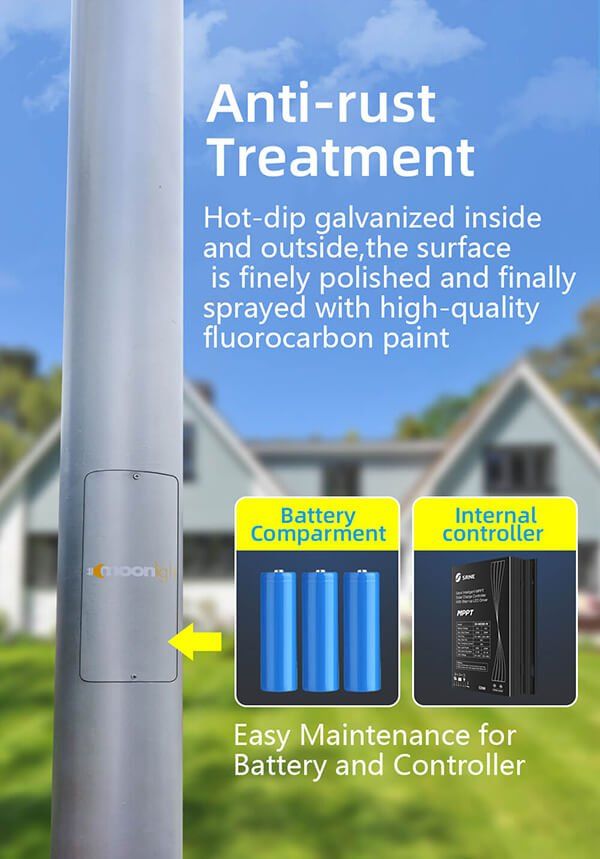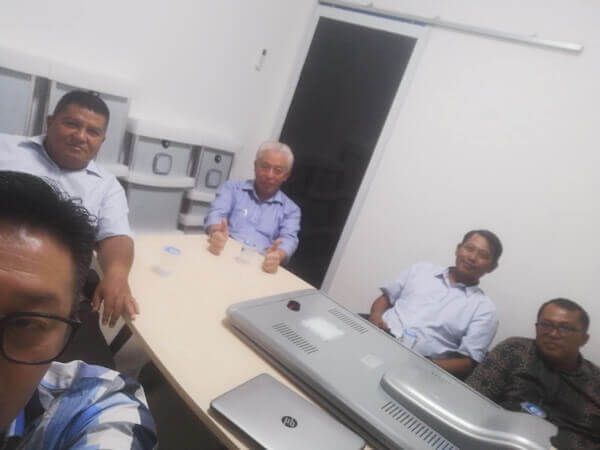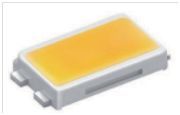Table of Contents
Advantages of Choosing the Best Solar Street Lighting Fixture Manufacturer
When it comes to illuminating streets and public spaces, the adoption of solar street lighting systems has emerged as a sustainable and efficient solution. Among the crucial decisions in implementing such systems is selecting the right manufacturer for solar street lighting fixtures. The choice of the manufacturer plays a pivotal role in determining the reliability, durability, and overall performance of the lighting system. In this regard, opting for the best solar street lighting fixture manufacturer offers several distinct advantages.
First and foremost, selecting a reputable manufacturer ensures the quality and reliability of the solar street lighting fixtures. Established manufacturers adhere to stringent quality control measures throughout the production process, utilizing high-grade materials and advanced technology to engineer durable and long-lasting fixtures. By investing in quality products, municipalities and organizations can minimize maintenance costs and ensure consistent performance over the system’s lifespan.
Moreover, the best solar street lighting fixture manufacturers offer a diverse range of products tailored to meet various project requirements and specifications. Whether it’s traditional pole-mounted fixtures or innovative split-type systems, these manufacturers provide comprehensive solutions to suit different installation settings and lighting needs. This versatility empowers customers to select the most suitable fixtures that align with their aesthetic preferences, budget constraints, and environmental objectives.
In addition to product diversity, reputable manufacturers also prioritize innovation and technological advancements in their solar street lighting solutions. By staying abreast of the latest developments in solar technology and energy efficiency, these manufacturers continuously enhance their products to deliver optimal performance and sustainability. This commitment to innovation translates into features such as intelligent lighting controls, adaptive brightness settings, and integrated monitoring systems, enhancing the efficiency and functionality of the lighting infrastructure.
Furthermore, choosing the best solar street lighting fixture manufacturer ensures access to comprehensive support services and technical expertise throughout the project lifecycle. From initial consultation and design assistance to installation guidance and after-sales support, reputable manufacturers offer end-to-end assistance to facilitate seamless deployment and operation of the lighting system. This personalized approach fosters a collaborative partnership between the manufacturer and the customer, enabling effective project management and timely resolution of any issues that may arise.
Another compelling advantage of selecting a leading solar street lighting fixture manufacturer is the assurance of compliance with industry standards and regulations. Established manufacturers adhere to rigorous testing protocols and certification requirements to ensure compliance with international quality and safety standards. By opting for certified products, customers can have confidence in the reliability and performance of the lighting fixtures, while also demonstrating their commitment to sustainability and responsible procurement practices.
In conclusion, the decision to choose the best solar street lighting fixture manufacturer is paramount to the success of any outdoor lighting project. By prioritizing quality, innovation, product diversity, and comprehensive support services, reputable manufacturers offer numerous advantages that enhance the performance, reliability, and sustainability of solar street lighting systems. From urban streetscapes to remote pathways, investing in high-quality fixtures from a trusted manufacturer is essential for achieving optimal illumination and maximizing the long-term benefits of solar-powered lighting infrastructure.
Key Features to Consider When Selecting Split Type Solar Street Lighting System
When it comes to selecting a split type solar street lighting system, there are several key features to consider to ensure you’re investing in the best solution for your needs. With the growing popularity of solar energy, more manufacturers are entering the market, offering a wide range of products with varying specifications. To help you make an informed decision, it’s essential to understand the important features that distinguish one system from another.
First and foremost, the efficiency of the solar panels is crucial. High-efficiency solar panels can convert more sunlight into electricity, maximizing the system’s overall performance. Look for systems that use monocrystalline or polycrystalline solar panels, as these are known for their efficiency and durability.
Another important feature to consider is the battery capacity and type. The battery is responsible for storing the energy generated by the solar panels for use during the night or when sunlight is not available. Lithium-ion batteries are commonly used in split type solar street lighting systems due to their high energy density, long lifespan, and low maintenance requirements. Make sure the system you choose has a sufficient battery capacity to meet your lighting needs throughout the night.
In addition to battery capacity, it’s essential to consider the controller technology used in the system. The controller regulates the flow of electricity from the solar panels to the battery and the LED lights, ensuring optimal performance and protection against overcharging and discharging. Advanced MPPT (Maximum Power Point Tracking) controllers are highly efficient and can significantly improve the overall energy conversion efficiency of the system.
Durability and weather resistance are also key factors to consider, especially for outdoor applications. The street lighting system will be exposed to various environmental conditions, including rain, wind, and extreme temperatures, so it’s important to choose a system that is built to withstand these challenges. Look for systems made from high-quality materials such as aluminum alloy or stainless steel and with an IP65 or higher rating for dust and water resistance.
Ease of installation and maintenance is another aspect to keep in mind when selecting a split type solar street lighting system. Choose a system that is easy to install and does not require extensive wiring or trenching, as this can significantly reduce installation time and cost. Additionally, opt for a system that is easy to maintain, with components that are readily accessible for inspection and replacement if needed.

Finally, consider the overall cost of the system, including not only the initial purchase price but also the long-term operating and maintenance costs. While it may be tempting to choose the cheapest option available, investing in a high-quality system with advanced features and durable components can ultimately save you money in the long run by reducing energy consumption and maintenance requirements.
In conclusion, selecting the best split type solar street lighting system requires careful consideration of several key features, including solar panel efficiency, battery capacity and type, controller technology, durability, ease of installation and maintenance, and overall cost. By prioritizing these features and choosing a reputable manufacturer with a proven track record, you can ensure that you’re investing in a reliable and efficient lighting solution that will meet your needs for years to come.
Understanding the Pricing Factors of Split Type Solar Street Lighting Systems
As the world embraces renewable energy solutions to combat climate change, solar street lighting systems have emerged as a viable and sustainable option for outdoor illumination. Among the various types available, split type solar street lighting systems have gained popularity due to their efficiency and versatility. However, understanding the pricing factors of these systems is crucial for making informed decisions. In this article, we delve into the key considerations that influence the pricing of split type solar street lighting systems.
First and foremost, the quality of the components used plays a significant role in determining the price of a split type solar street lighting system. High-quality solar panels, batteries, LED lights, and controllers are essential for ensuring reliability and longevity. Manufacturers that prioritize using premium components will often command a higher price for their products. Investing in quality components upfront can result in lower maintenance costs and higher energy efficiency over the system’s lifetime.
Another factor that affects the pricing of split type solar street lighting systems is the design and engineering involved. Customized solutions tailored to specific project requirements may incur higher costs due to the additional design and engineering work involved. Factors such as site location, lighting requirements, and environmental conditions need to be carefully considered during the design phase to optimize the system’s performance and longevity. Manufacturers that offer comprehensive design services and technical support may charge a premium for their expertise.
| Nr. | Commodity Name |
| 1 | Integrated Solar Street Light |
The installation process is also a significant factor in determining the overall cost of a split type solar street lighting system. Factors such as labor costs, equipment rental, and site preparation can vary depending on the complexity of the installation site. Remote locations or sites with challenging terrain may require additional resources and expertise, leading to higher installation costs. Manufacturers that offer installation services as part of their package may provide more competitive pricing and ensure seamless integration of the system.
Furthermore, warranty and after-sales support are essential considerations when evaluating the price of a split type solar street lighting system. A robust warranty package provides peace of mind and protects the investment against potential defects or malfunctions. Manufacturers that offer extended warranties and responsive customer support may command a higher price but can ultimately save costs in the long run by minimizing downtime and maintenance expenses.
In addition to the upfront costs, it is essential to consider the long-term operational expenses associated with split type solar street lighting systems. Energy efficiency, maintenance requirements, and lifespan are critical factors that impact the overall cost of ownership. Investing in energy-efficient components and technologies can result in significant savings on electricity bills over the system’s lifespan. Likewise, opting for low-maintenance designs and durable materials can reduce ongoing maintenance costs and extend the system’s lifespan, resulting in better value for money.
In conclusion, understanding the pricing factors of split type solar street lighting systems is essential for making informed decisions and maximizing the return on investment. Quality components, customized design, installation complexity, warranty coverage, and long-term operational expenses all contribute to the overall cost of the system. By carefully evaluating these factors and selecting a reputable manufacturer that offers value-added services, customers can ensure they are getting the best solar street lighting solution for their needs.






